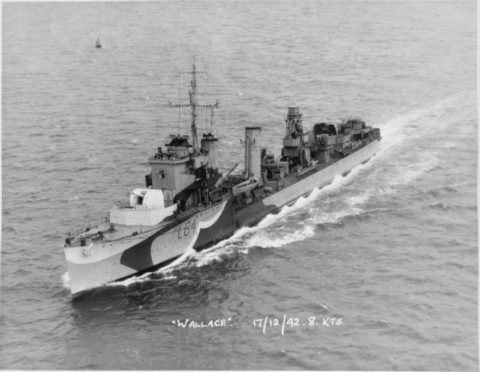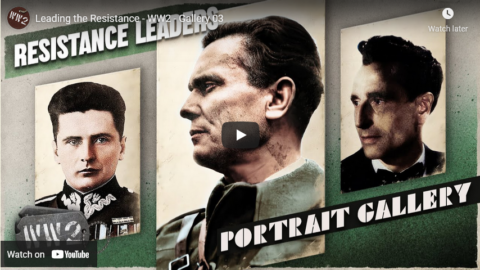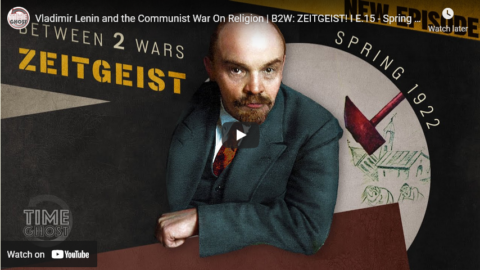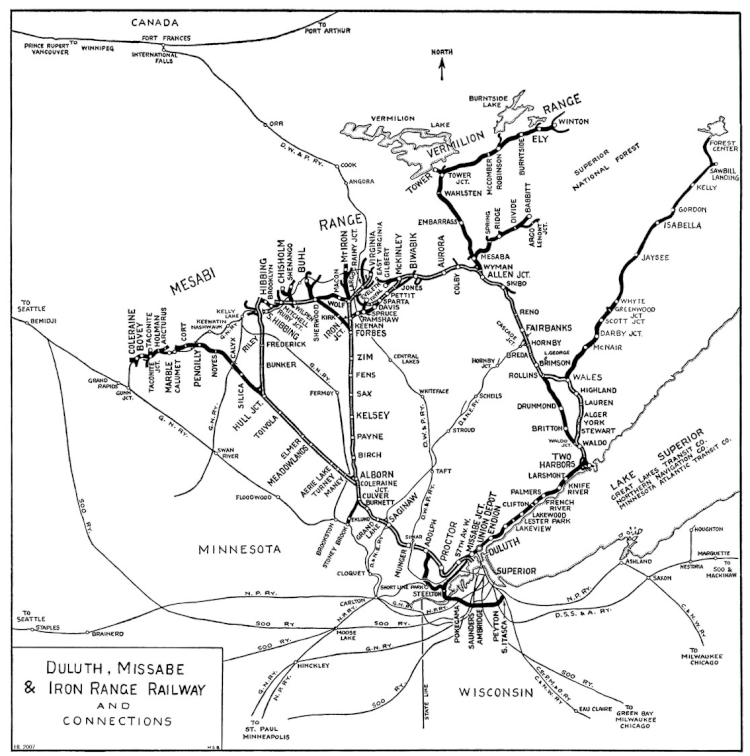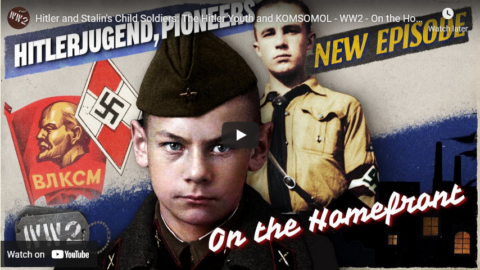Forgotten Weapons
Published 12 Jun 2018http://www.forgottenweapons.com/brita…
http://www.patreon.com/ForgottenWeapons
Cool Forgotten Weapons merch! http://shop.bbtv.com/collections/forg…
Developed by BSA immediately after World War Two, the No7 MkI training rifle was the only one of the British Enfield trainers to use a magazine. Only 2500 of these rifles were produced, contracted by the Royal Air Force and delivered in 1948. Their magazine is a commercial BSA 5-round magazine modified slightly to latch into a housing inside a regular No4 Enfield magazine body. This makes them a particularly enjoyable rifle for range shooting, as well as one of the scarcest of the standard British trainers.Note that Canada also developed and adopted a No7 MkI .22 rimfire trainer, but that type is a single shot design, and does not share any parts with the British No7 MkI.
If you enjoy Forgotten Weapons, check out its sister channel, InRangeTV! http://www.youtube.com/InRangeTVShow
Contact:
Forgotten Weapons
6281 N Oracle #36270
Tucson, AZ 85704
April 10, 2021
Britain’s Only Repeating Enfield Trainer: the No7 Mk I
QotD: “Too proud to fight”
[T]he example of America must be a special example … the example, not merely of peace because it will not fight, but of peace because peace is the healing and elevating influence of the world and strife is not. There is such a thing as a man being too proud to fight. There is such a thing as a nation being so right that it does not need to convince others by force that it is right.
Woodrow Wilson, speech in Philadelphia, 1915-05.
April 9, 2021
HRH Prince Philip, Duke of Edinburgh, 1921-2021
Sad, but not unexpected news this morning as His Royal Highness Prince Philip has died. Along with all of his many earthly titles and awards, he was considered divine by villagers in Vanuatu. Janet Davison reports for the CBC:

HRH Prince Philip was the Colonel-in-Chief of the Royal Canadian Regiment. In April 2013, he presented the Regimental Colours to the 3rd Battalion.
Photo by Jamie McCaffrey via Wikimedia Commons.
Prince Philip, the Duke of Edinburgh and husband of Queen Elizabeth, died today at 99. He was the longest-serving royal consort in British history.
His death, announced by Buckingham Palace, came more than three-and-a-half years after Philip formally stepped back from public life, a retreat that had been happening gradually for several years.
In an interview in June 2011 with the BBC, the no-nonsense Philip spoke about “winding down” and reducing his workload as a member of the Royal Family.
“I reckon I’ve done my bit so I want to enjoy myself a bit now, with less responsibility, less frantic rushing about, less preparation, less trying to think of something to say,” he said.
His final official public engagement came on Aug, 2, 2017, when he attended a parade of Royal Marines at Buckingham Palace and met servicemen who had taken part in a charity race.
Prime Minister Justin Trudeau issued a statement Friday calling Philip “a man of great service to others” who maintained a special relationship with the Canadian Armed Forces and was a patron to more than 40 Canadian organizations.
“Prince Philip was a man of great purpose and conviction, who was motivated by a sense of duty to others,” he said. “He will be fondly remembered as a constant in the life of our Queen – a lifelong companion who was always at her side offering unfailing support as she carried out her duties.”
Through the Queen’s 69 years on the throne, the man whom she had called her “strength and stay” carried out more than 22,000 solo engagements and made nearly 5,500 speeches. He attended events periodically with the Queen and other members of the Royal Family after stepping back from official duties.
Update: Colby Cosh recounts a story about Prince Philip’s WW2 naval career that I’d never heard before:
Socially he was entitled to the style of “royal highness” in his own right, yet he was looked down on by mere aristocrats, and even commoners, who had superior public-school credentials and polish. Marriage to a princess might have been impossible if Philip hadn’t impressed George VI personally. As a junior officer he was well-liked, but strict about shipboard order and neatness. He was said to have a natural intuition for command. If he wanted something done, his word put everything in motion at once.
The Royal Navy destroyer HMS Wallace in December, 1942.
Imperial War Museum photo FL 10546 of collection 8308-29 via Wikimedia Commons.He performed well throughout the war, but his finest moment as an officer was not common knowledge until Harry Hargreaves, a Royal Navy yeoman who ended up in Westport, Ont., published a memoir of his own service in 1999. Hargreaves served with Philip aboard HMS Wallace, an old “flotilla leader” ship that had been finished in 1919 and modified for speed. Its original shore-bombardment hardware was pulled in favour of anti-aircraft guns and submarine-killing equipment.
Wallace’s and the prince’s great moment came in July 1943 when the ship was assigned to escort Convoy KMF18 from the Algerian harbour of Bône to the beaches of Sicily. As it happens, this convoy carried the First Canadian Division, which Mackenzie King had lobbied to put in action for the first large-scale amphibious invasion of occupied Europe. Wallace was to ward off U-boats on the trans-Mediterranean journey and then protect the landing party from German air attacks.
On the evening of July 8, Wallace was spotted on a clear, bright night and attacked by flights of Stuka dive-bombers. One damaging near-miss, Hargreaves wrote, had everybody prepared to die when the Stukas came back. Philip, the ship’s first lieutenant, quickly cooked up a plan to build a raft and set it afloat with smoke floats attached, hoping it would look enough like the wreckage of a destroyed ship to distract the returning planes.
“It had been marvellously quick thinking,” Hargreaves said, “conveyed to a willing team and put into action as if rehearsed.” But it required Wallace to steam away from the decoy and await its fate in silence and darkness. When the Stukas came back into earshot, the yeoman “screwed up (his) shoulders in anticipation of the bombs.”
The Germans took the bait and attacked the decoy. “Prince Philip,” Hargreaves concluded, “saved our lives that night.” He also saved the ship, which went on to cover the British-Canadian landing near Pachino.
Having survived the scrape, the prince was alive and intact to attend the Royal Family’s Christmas pantomime at Windsor Castle. Princess Elizabeth’s governess, Marion Crawford, found that combat had turned a “bumptious boy” into a “grave and charming man.” But the princess’s already longstanding crush on her distant cousin had not flagged, and never would.
Leading the Resistance – WW2 – Gallery 03
World War Two
Published 8 Apr 2021Under the violent occupation by Axis forces, dozens all over the globe resisted or took up arms to fight for the survival of their nation, ethnicity, ideology or ideals.
Join us on Patreon: https://www.patreon.com/TimeGhostHistory
Or join The TimeGhost Army directly at: https://timeghost.tvFollow WW2 day by day on Instagram @ww2_day_by_day – https://www.instagram.com/ww2_day_by_day
Between 2 Wars: https://www.youtube.com/playlist?list…
Source list: http://bit.ly/WW2sourcesHosted by: Spartacus Olsson
Written by: Spartacus Olsson and Joram Appel
Director: Astrid Deinhard
Producers: Astrid Deinhard and Spartacus Olsson
Executive Producers: Astrid Deinhard, Indy Neidell, Spartacus Olsson, Bodo Rittenauer
Creative Producer: Maria Kyhle
Post-Production Director: Wieke Kapteijns
Research by: Joram Appel
Edited by: Miki Cackowski
Sound design: Marek Kamiński
Map animations: Eastory (https://www.youtube.com/c/eastory)Colorizations by:
Mikołaj Uchman
Dememorabilia – https://www.instagram.com/dememorabilia/Sources:
Marxist Internet Archive
Picture of Tito during a Partisan gathering, courtesy of Музеј Старе Херцеговине
Yad Vashem 75FO4, 4613/899, 4248/20, 1605/91
Bundesarchiv
USHMM
IWM NA 15129Soundtracks from the Epidemic Sound:
Phoenix Tail – “At the Front”
Reynard Seidel – “Deflection”
Hakan Eriksson – “Epic Adventure Theme 4”
Johannes Bornlof – “The Inspector 4”
Fabien Tell – “Last Point of Safe Return”
Howard Harper-Barnes – “London”
Rannar Sillard – “March Of The Brave 10”Archive by Screenocean/Reuters https://www.screenocean.com.
A TimeGhost chronological documentary produced by OnLion Entertainment GmbH.
Where does the atmosphere end? | Head Squeeze
BBC Earth Lab
Published 7 Feb 2013How many layers does the atmosphere have, and what’s in all of them? James May explains…
Outtakes for this video here: http://www.youtube.com/watch?v=gdSu9Y…
Check out Felix Baumgartner’s space dive here:
http://www.youtube.com/watch?v=FHtvDA…Welcome to BBC Earth Lab! Here we answer all your curious questions about science in the world around you (and further afield too). If there’s a question you have that we haven’t yet answered let us know in the comments on any of our videos and it could be answered by one of our Earth Lab experts.
April 8, 2021
Rediscovering the Fish-Head Marking Gauge // Make your own woodworking tools!
Rex Krueger
Published 7 Apr 2021This nearly forgotten layout tool is a powerful addition to your hand tool shop.
More video and exclusive content: http://www.patreon.com/rexkrueger
Get the Plans: https://www.rexkrueger.com/store/plan…Get the Specialty Plane Bundle:
https://www.rexkrueger.com/store/spec…
Videos for each project: https://youtube.com/playlist?list=PLR…Get the Journeyman’s Plan Bundle:
https://www.rexkrueger.com/store/jour…
Videos for each project: https://youtube.com/playlist?list=PLR…———————————————————————-
Tools and Techniques from this Video:
Learn to cut mortises:
Video: https://youtu.be/oa0x1kAroHwMake a Turning Saw from scrap wood
Video: https://youtu.be/8Agk6tJtRs0
Plans: https://www.rexkrueger.com/store/diy-…Learn ways to hold your work
Video: https://youtu.be/kzv27STMnvYBuild the English Joiner’s Bench
Video: https://youtu.be/zcq1LQq08lk
Plans: https://bit.ly/2QZls9TMake your own Spoke Shave
Video: https://youtu.be/IPYvwAmoHos
Plans: https://www.rexkrueger.com/store/make…Make a Traditional English Marking Gauge
Video: https://youtu.be/tm7AFpc02gA
Plans: https://www.rexkrueger.com/store/plan…Get the Spoke Shave and 4 other tools as part of the Specialty Plane Bundle!:
https://www.rexkrueger.com/store/spec…Get the Turning Saw and 4 other projects as part of the Journeyman’s Plan Bundle!:
https://www.rexkrueger.com/store/jour…———————————————————————-
Quercus Magazine: https://quercusmagazine.com/
Buy individual issues: https://toolsforworkingwood.com/store…———————————————————————-
Brad’s Woodturning (He’s a Patron!): https://www.youtube.com/channel/UCU4B…
———————————————————————-
Sign up for Fabrication First, my FREE newsletter: http://eepurl.com/gRhEVT
———————————————————————-
Wood Work for Humans Tool List (affiliate):
*Cutting*
Gyokucho Ryoba Saw: https://amzn.to/2Z5Wmda
Dewalt Panel Saw: https://amzn.to/2HJqGmO
Suizan Dozuki Handsaw: https://amzn.to/3abRyXB
(Winner of the affordable dovetail-saw shootout.)
Spear and Jackson Tenon Saw: https://amzn.to/2zykhs6
(Needs tune-up to work well.)
Crown Tenon Saw: https://amzn.to/3l89Dut
(Works out of the box)
Carving Knife: https://amzn.to/2DkbsnM
Narex True Imperial Chisels: https://amzn.to/2EX4xls
(My favorite affordable new chisels.)
Blue-Handled Marples Chisels: https://amzn.to/2tVJARY
(I use these to make the DIY specialty planes, but I also like them for general work.)*Sharpening*
Honing Guide: https://amzn.to/2TaJEZM
Norton Coarse/Fine Oil Stone: https://amzn.to/36seh2m
Natural Arkansas Fine Oil Stone: https://amzn.to/3irDQmq
Green buffing compound: https://amzn.to/2XuUBE2*Marking and Measuring*
Stockman Knife: https://amzn.to/2Pp4bWP
(For marking and the built-in awl).
Speed Square: https://amzn.to/3gSi6jK
Stanley Marking Knife: https://amzn.to/2Ewrxo3
(Excellent, inexpensive marking knife.)
Blue Kreg measuring jig: https://amzn.to/2QTnKYd
Round-head Protractor: https://amzn.to/37fJ6oz*Drilling*
Forstner Bits: https://amzn.to/3jpBgPl
Spade Bits: https://amzn.to/2U5kvML*Work-Holding*
Orange F Clamps: https://amzn.to/2u3tp4X
Screw Clamp: https://amzn.to/3gCa5i8Get my woodturning book: http://www.rexkrueger.com/book
Follow me on Instagram: @rexkrueger
Andrew Doyle defends freedom of speech in his new book
In The Critic, Simon Evans reviews Free Speech And Why It Matters by Andrew Doyle (who is perhaps best known on this side of the pond for his ultrawoke Twitter persona “Titania McGrath”):
When I am weaker than you, I ask you for Freedom, because that is according to your principles; when I am Stronger than you, I take away your freedom because that is according to my principles.
Frank Herbert, Children of DuneIt is most peculiar. If the counter-culture had a dominant theme, it was the right to criticise the establishment and to question orthodoxy of all kinds. Back in the Sixties, it was central to its mission to Expand your Consciousness, man. And it worked. Walls came tumbling down. Yet now, everywhere you look, it seems the elements of society — students, academics, comedians — that one would most naturally associate with that freedom of expression, are introducing caveats and qualifiers to that principle faster than you can cry “Stop Little Pol-Pot, Stop!” They are turning, before our very eyes, into actual scolds.
It must be supposed that what was once the siege army, camped outside the moat like Occupy Wall Street, has captured the castle, for they are demanding that the walls be re-erected. That “hate” speech be distinguished from free speech and dealt with accordingly. That freedom of speech need not mean freedom from consequences. And a general suspicion is at large, among the young, that free speech is some sort of artefact of complacent boomer self-indulgence, like Steely Dan and second homes. No longer counter-culture, but decidedly counter-revolutionary.
I’m a comedian, and these have been strange times for our trade. Brexit saw comedians side with the mirthless neo-liberal consensus, against the humorous, sceptical grumble of the common rabble. The same thing happened in America, with bar-room stand-ups horrified by the vulgarity of Trump. And now the latest revision sees many of my fellow jesters and fools unsure whether people can really be trusted with free speech.One might have thought this issue had been settled long ago, in this country, and in liberty’s favour. But no, it seems we need to sharpen our tools once again, and Andrew Doyle’s new book is an excellent place to start.
Making the case for the defence, Doyle’s book is terse, restrained and as carefully argued as a QC’s summing-up in a top-drawer courtroom drama. Whether his command of the material comes from his doctorate in Renaissance literature or his experience of defending the comedy character Titania McGrath from infuriated wokerati, who knows? It is a beautifully balanced and comprehensive overview that will of course be read by no one who needs to hear it.
It is admirably historically literate. Doyle takes a quote from Milton’s Areopagitica as his epigram, with the old poet, declaiming over the din of the Civil War, as defiant as Satan himself, “Give me liberty to know, to utter, and to argue freely according to conscience, above all liberties.”
This sets the tone for the whole book, but Doyle also presents arguments intended to appeal to those who insist that we live in a society. With the compromises that entails. This was most famously recognised by notorious cis-hetero white man and free speech absolutist John Stuart Mill, who was surveying the world from the heights of Victorian Exceptionalism when he published the still unsurpassed On Liberty.
Vladimir Lenin and the Communist War On Religion | B2W: ZEITGEIST! I E.15 – Spring 1922
TimeGhost History
Published 7 Apr 2021Vladimir Lenin founded the Bolshevik Party, orchestrated the October Revolution, and led the world’s first communist state to victory in the Russian Civil War. He is now gravely ill and close to death, but he still has one more enemy he wants to crush.
Join us on Patreon: https://www.patreon.com/TimeGhostHistory
Hosted by: Indy Neidell
Written by: Francis van Berkel
Director: Astrid Deinhard
Producers: Astrid Deinhard and Spartacus Olsson
Executive Producers: Astrid Deinhard, Indy Neidell, Spartacus Olsson, Bodo Rittenauer
Creative Producer: Maria Kyhle
Post-Production Director: Wieke Kapteijns
Research by: Francis van Berkel and Lewis Braithwaite
Image Research by: Daniel Weiss
Edited by: Daniel Weiss
Sound design: Marek KamińskiColorizations:
Daniel Weiss – https://www.facebook.com/TheYankeeCol…Sources:
Painting of Tikhon by Moskvitin Philip
Photos from Color by Klimbim
Bundesarchiv_Bild – 183-R14433 (Vertrag von Rapallo)Soundtracks from Epidemic Sound
– “One More for the Road” – Golden Age Radio
– “Not Safe Yet” – Gunnar Johnsen
– “Dark Shadow” – Etienne Roussel
– “Explaining Gravity” – Silver Maple
– “Far Far Far” – Hector Posser
– “Dawn Of Civilization” – Jo Wandrini
– “Ominous” – Philip Ayers
– “Walk With Legends” – Bonnie Grace
– “What Now” – Golden Age Radio
– “Weapon of Choice” – Fabien TellArchive by Screenocean/Reuters https://www.screenocean.com.
A TimeGhost chronological documentary produced by OnLion Entertainment GmbH.
From the comments:
TimeGhost History
2 days ago (edited)
The Russian Orthodox Church was once an all-mighty institution throughout what was the Russian Empire. But now in a matter of years, it has been completely swept aside by the new Soviet government in the name of progress and reason. This is just one — particularly violent — example of what has been a common theme of this era: the conflict between religion and modernity.It has already come a few times in the series and will continue to do so, but it’s not always a story of retreating faith like it is in this episode. As you will see in later episodes, organized religion often fights back against modernity and even sometimes tries to accommodate it. You’ll have to stay tuned to find out exactly why.
Fallen Flag — the Duluth, Missabe & Iron Range Railway

The Merritt family of Minnesota (known as the “Seven Iron Brothers“) discovered a large iron ore deposit in the Mesabi Range and created the largest iron ore mine in the world (as of the 1890s) and tried to persuade the DMN to build a 70-mile rail connection to get their ore to harbour and out to the iron and steel foundries around the Great Lakes. The DMN was unwilling to commit, so the Merritt family borrowed money to build the line from, among other financiers, John D. Rockefeller. The line — called the Duluth, Missabe and Northern — got built and began operations in 1892, but the Merritts expanded too quickly at the wrong moment — the financial panic of 1893 — losing financial control and leaving ownership of both the mine and the railway in Rockefeller’s hands by 1894.
Charlemagne Tower sold the Duluth & Iron Range to Illinois Steel in 1887, which was succeeded by Federal Steel, then U.S. Steel. By 1901, both the D&IR and DM&N were under U.S. Steel control. USS upgraded both railroads with heavy rail and double track, ordered bigger locomotives and larger cars, and built sizeable shops and roundhouses at Proctor and Two Harbors.
In 1915 DM&N leased the Spirit Lake Transfer Railway, a link between DM&N at Adolph, near Proctor, and the Interstate Transfer Railway at Oliver, Wis., across from Steelton, Minn. The Interstate Transfer ran from Oliver to Itasca, in eastern Superior, giving the DM&N connections with large railroads including Northern Pacific, Chicago & North Western’s “Omaha Road”, and three members of the Canadian Pacific family: Minneapolis, St. Paul & Sault Ste. Marie (“Soo Line”); Wisconsin Central; and Duluth, South Shore & Atlantic.
DM&N and D&IR remained separate until January 1, 1930, when the DM&N leased the D&IR and consolidated operations. Then on July 1, 1937, the DM&N merged with the Spirit Lake Transfer to form the Duluth, Missabe & Iron Range Railway. DM&IR then acquired ownership of D&IR and Interstate Transfer, and they became part of the new corporation on March 22, 1938. Reminders of the two big predecessors remained in the DM&IR’s two operating divisions, named Iron Range and Missabe, made up primarily of the predecessors’ tracks.
The Great Depression drastically reduced ore traffic. In 1932, not a single all-ore train was run — the small amount of ore that had to be shipped was carried in mixed freights. World War II reversed the road’s fortunes, of course, and the postwar boom resulted in an even higher demand for ore, with an all-time tonnage record being set in 1953.
Missabe had minimal passenger service. Into the 1950s, handsome Pacifics pulled heavyweight steel RPOs and coaches, two with solarium observation sections. At the end of World War II, the Missabe still provided service between Duluth and Ely (Winton), and Duluth and Hibbing, with the Hibbing train connecting with one from Iron Junction to Virginia.

Duluth, Missabe & Iron Range M-3 locomotive no. 227.
Photo by “GavinTheGazelle” via Wikimedia Commons.
U.S. Steel spun off the DM&IR and its other ore railroads and shipping companies to subsidiary Transtar in 1988, selling majority control to the Blackstone Group. In 2001, DM&IR and other holdings were moved from Transtar to Great Lakes Transportation, fully owned by Blackstone, so for the first time in a century, DM&IR was no longer associated with U.S. Steel. On October 20, 2003, Canadian National announced it would buy Great Lakes Transportation, which also owned Bessemer & Lake Erie, Pittsburgh & Conneaut Dock Co. in Ohio, and Great Lakes Fleet, Inc. The purchase was finalized on May 10, 2004, and the independent Missabe Road vanished.
CN retired all but 10 of the SD40-3s, most of the SD38s, and all the rebuilt SD9s and 18s. Major locomotive work shifted from Proctor to other shops, and train dispatchers moved to Wisconsin, then Illinois. CN invested in new ore cars for the Missabe, gradually replacing those that dated to when steam still ruled the railroad. DM&IR existed on paper until December 31, 2011, when CN merged subsidiaries DM&IR and Duluth, Winnipeg & Pacific into Wisconsin Central.
The Weird Years of The Simpsons (1989-1994)
J.J. McCullough
Published 2 Jan 2021The show struggled for five years to figure out what kind of show it wanted to be, and how to treat its characters. It could have been much weirder than it was.
FOLLOW ME:
🇨🇦Support me on Patreon! https://www.patreon.com/jjmccullough
🤖Join my Discord! https://discord.gg/3X64ww7
🇺🇸Follow me on Instagram! https://www.instagram.com/jjmccullough/
🇨🇦Read my latest Washington Post columns: https://www.washingtonpost.com/people…
🇨🇦Visit my Canada Website http://thecanadaguide.comHASHTAGS: #tv #animation
QotD: Thomas Hobbes and his “state of nature”
One reason I had such a hard time teaching this stuff to undergraduates back in my ivory tower days was that, ironically, we can imagine a much more “realistic” State of Nature than Hobbes could. We even had a TV show about it: Lost (in which, I’m told, one of the characters was actually named “John Locke”). A large group of strangers, unrelated by blood or affinity, would never be shipwrecked on a deserted island in Hobbes’s day, but we Postmoderns have no problem imagining a large international flight going down. Assume everyone survives the crash, and there’s your State of Nature – a much better one than Hobbes’s.
Under those very specific conditions, something like what Hobbes says might come to pass. In reality, of course, we seem to be much likelier to pull together in a disaster than to immediately go full retard, but let’s envision the most apocalyptic scenario, in which every guy who can bench press his body weight (assuming such still exist on international flights) immediately tries to lord it over everyone else on the island. There, and only there, the stuff Hobbes says about equality is true – the strong guy can beat up the weak guy, and enslave him, but the strong guy has to sleep sometime …
… so pretty soon there are no more strong guys, only various flavors of weak, clever guys, and now they have to band together, because you need three or four of them to accomplish the physical labor that one strong guy could’ve before they murdered him in his bed. And so on, you get the point, eventually everyone grudgingly lays down his arms and starts working together for mutual survival.
At this point, I need to point out something fundamental about Thomas Hobbes, that y’all probably don’t know. Hobbes always considered himself first and foremost a mathematician. But he wasn’t a very good mathematician. He’d thought he’d discovered a way to “square the circle,” for instance, and that’s not a metaphor – that was really a thing back then, and Hobbes’s attempt got ripped to shreds by real mathematicians, who thought they were thereby discrediting his metaphysics and, by implication, his political philosophy …
… fun stuff, but irrelevant, the point is, Hobbes was a bad mathematician. So bad, in fact, that even I, a former History professor who needs to pull off a sock every time I have to count past ten, can see the glaring flaw in his “geometrical” political theory: IF it’s based on “the State of Nature,” and we legitimize the Leviathan because that’s what gets us out of the State of Nature, then once we are free of the State of Nature, what’s the point of the Leviathan?
Hobbes didn’t see it that way, of course. He thought that we really did revert to “the war of all against all” the minute the social contract was broken, and in his context – the English Civil Wars, recall – that’s not unreasonable. But what about all the periods of “normal” government? You know, those periods of peace we created the Leviathan specifically to secure? If we get those – and there’s no point to the exercise otherwise – then we seem to have created an all-powerful government that, while it CAN do everything, really shouldn’t do anything.
Severian, “Hobbes (II)”, Founding Questions, 2020-12-11.
April 7, 2021
Hitler and Stalin’s Child Soldiers: The Hitler Youth and KOMSOMOL – WW2 – On the Homefront 008
World War Two
Published 6 Apr 2021Patriotism and war enthusiasm sweeps through the totalitarian countries in the run-up to the Second World War. This doesn’t leave out children either, who are supposed to become the prime soldiers of the future.
Join us on Patreon: https://www.patreon.com/TimeGhostHistory
Or join The TimeGhost Army directly at: https://timeghost.tvFollow WW2 day by day on Instagram @ww2_day_by_day – https://www.instagram.com/ww2_day_by_day
Between 2 Wars: https://www.youtube.com/playlist?list…
Source list: http://bit.ly/WW2sourcesHosted by: Anna Deinhard
Written by: Fiona Rachel & Spartacus Olsson
Director: Astrid Deinhard
Producers: Astrid Deinhard and Spartacus Olsson
Executive Producers: Astrid Deinhard, Indy Neidell, Spartacus Olsson, Bodo Rittenauer
Creative Producer: Maria Kyhle
Post-Production Director: Wieke Kapteijns
Research by: Fiona Rachel
Edited by: Karolina Dołega
Sound design: Marek KamińskiColorizations by:
– Mikołaj Uchman
– Daniel WeissSources:
– Bundesarchiv
– Library of Congress
– RIAN NOVOSTI: 25358
– Narodowe Archiwum Cyfrowe NAC
– Yad Vashem: 6884/13, 6884/14, 6884/5
– National Archives NARA
– Picture of Boy Scouts at a Campsite courtesy of Springfield College, Archives and Special Collections
– English children at school in 1920s courtesy of pellethepoet from Flickr – https://tinyurl.com/yerg47hn
– Fortepan: 5660, 1371, 32045, 55755,
– Picture of the League of German Girls with children courtesy of Facing History and Ourselves & Hoover Institution Archives – https://tinyurl.com/yzrfozasSoundtracks from Epidemic Sounds:
– “The Inspector 4” – Johannes Bornlöf|
– “Weapon of Choice” – Fabien Tell
– “Remembrance” – Fabien Tell
– “Moving to Disturbia” – Experia
– “Break Free” – Fabien TellArchive by Screenocean/Reuters https://www.screenocean.com.
A TimeGhost chronological documentary produced by OnLion Entertainment GmbH.
From the comments:
World War Two
3 hours ago (edited)
When thinking of people who have been affected by the horrors of war, children are not usually the first group to pop into one’s mind. Of course, fathers away at the front and wartime propaganda bring the war closer to children’s homes, but with state-controlled youth organizations in totalitarian countries, we have yet another topic at our hands, how the war crept into children’s lives. Even though with the end of the war this dark chapter of youth movements in Europe mostly got to an end, clubs and associations are still an important part of youth culture to network and emancipate oneself. Have you been part of a club or other youth organizations in your childhood? Please let us know in the comments.Cheers, Fiona
Bring back the … guillotine?
I’d always generally assumed that Colby Cosh was a libertarian-leaning chap, but here he is banging on the table for executing criminals with that revolutionary French device, the guillotine:
The history of the death penalty in the English-speaking world looks extremely bizarre from any vantage point in the year 2021. The electric chair, now abolished throughout the United States, has always been a stupid, barbarous idea: it sprouted from a time when electricity was a fashionable new technology, and then just kind of stuck around for a century. Gas chamber arrangements came and went.
Hanging, which is still employed in Japan, has centuries of technique behind it, but is recognizably a holdover from a period when the risk of prolonged death was considered a feature, not a bug. Now the U.S. depends on lethal injection methods, some of them antiquated or illogical, that are very capable of being screwed up.
And in the meantime, the guillotine had its foolproof two-century run in France. The famous Dr. Joseph-Ignace Guillotin was a revolutionary opponent of capital punishment who advocated for the device as being more humane than existing methods. Can this be argued against even now? Measurement of the suffering involved with various methods of execution (or euthanasia) involves more uncertainty than anyone likes to admit, but patients receiving lethal injection, whether at their own request or the law’s, do receive sedation before actually being administered a fatal substance. The maximum duration of suffering in a beheading is a matter of seconds, not minutes; and if you believe in capital punishment without cruelty, there is no reason a person with a guillotine appointment should not be permitted to load up in advance on drugs of their own choosing.
The guillotine’s last use in France, and anywhere else in the world, took place on Sept. 10, 1977. It is associated in Anglo-Saxon minds with everything from French revolutionary terror to the Gestapo and the Stasi. There are good reasons to be reluctant to introduce mechanization of any kind into the process of executing murderers. Perhaps it makes the fatal step toward killing mere political enemies a little easier.
But, again, Americans used the electric chair without noticeable shame for more than 100 years: it came into use on a wave of passion for modernity before anyone even knew exactly how electricity kills you. Beheading’s principal problem, assuming one is willing to contemplate the taking of a human life by the state, is janitorial.
Britain’s First Standard Trainer: the No 2 Mk IV*
Forgotten Weapons
Published 6 Jun 2018http://www.forgottenweapons.com/brita…
http://www.patreon.com/ForgottenWeapons
Cool Forgotten Weapons merch! http://shop.bbtv.com/collections/forg…
The British military started using training rifles in 1883, with the .297/.230 Morris cartridge in adapted Martini rifles. This would give way to the .22 rimfire cartridge for training shortly after the Boer War, and a substantial variety of rifles converted to .22 rimfire. Standardization would take until 1921, when the “Rifle, short, .22 inch, RF, Mk IV” was formally adopted – a conversion of the No1 MkIII SMLE to a single shot .22 rimfire weapon. This was modified to Mk IV* in 1925, when an empty magazine body was added to the rifle, to act as a brass catcher.
Just to make things more confusing, the nomenclature system was retroactively changed in 1926, and the designation became Rifle, No2 Mk IV*. This rifle is a very simple conversion. It used a standard bolt body, with the striker and bolt head modified for a rimfire type firing pin and .22 caliber extractor. The sight was not even changed; instead a conversion chart was issued with the rifles to specify the proper sight settings for .22 rimfire shooting (ie, set sight to 300yd for shooting at 25yd). These rifles would be used into the 1950s, particularly by India and Australia, who did not produce No4 rifles and thus did not produce No4 trainer conversions either.
If you enjoy Forgotten Weapons, check out its sister channel, InRangeTV! http://www.youtube.com/InRangeTVShow
Contact:
Forgotten Weapons
6281 N Oracle #36270
Tucson, AZ 85704


